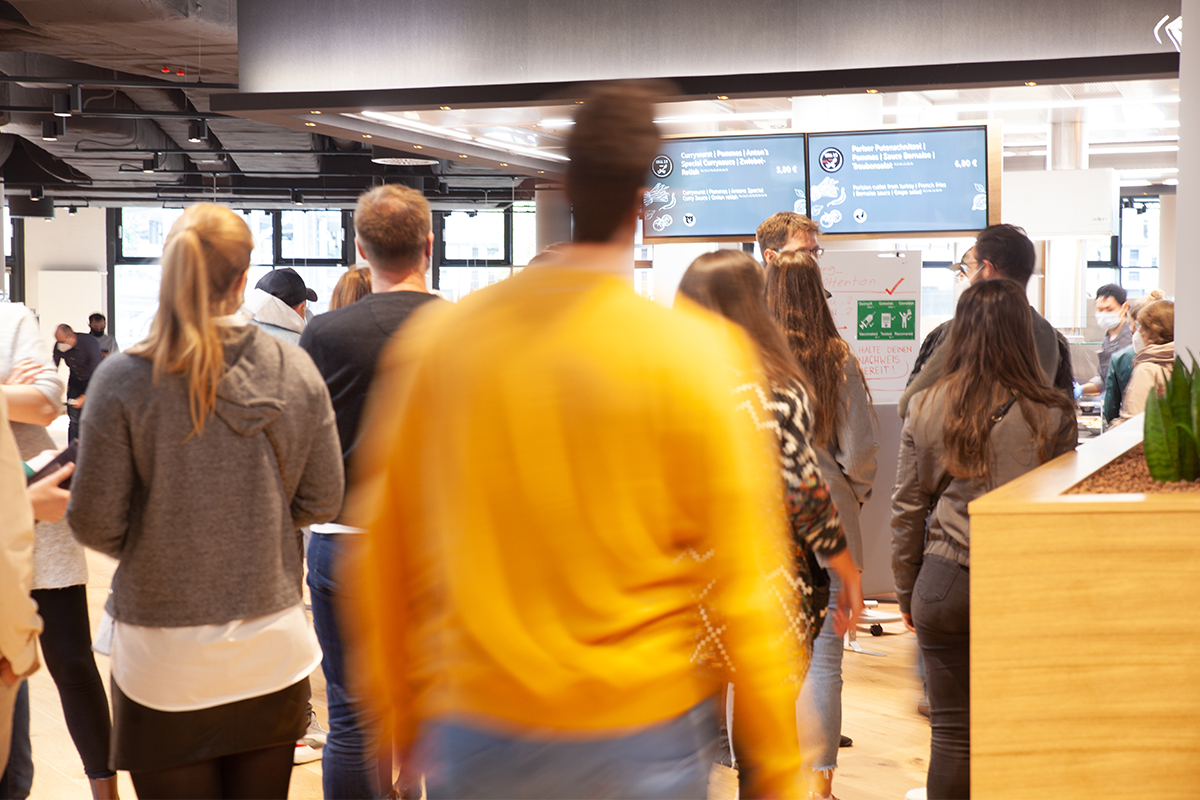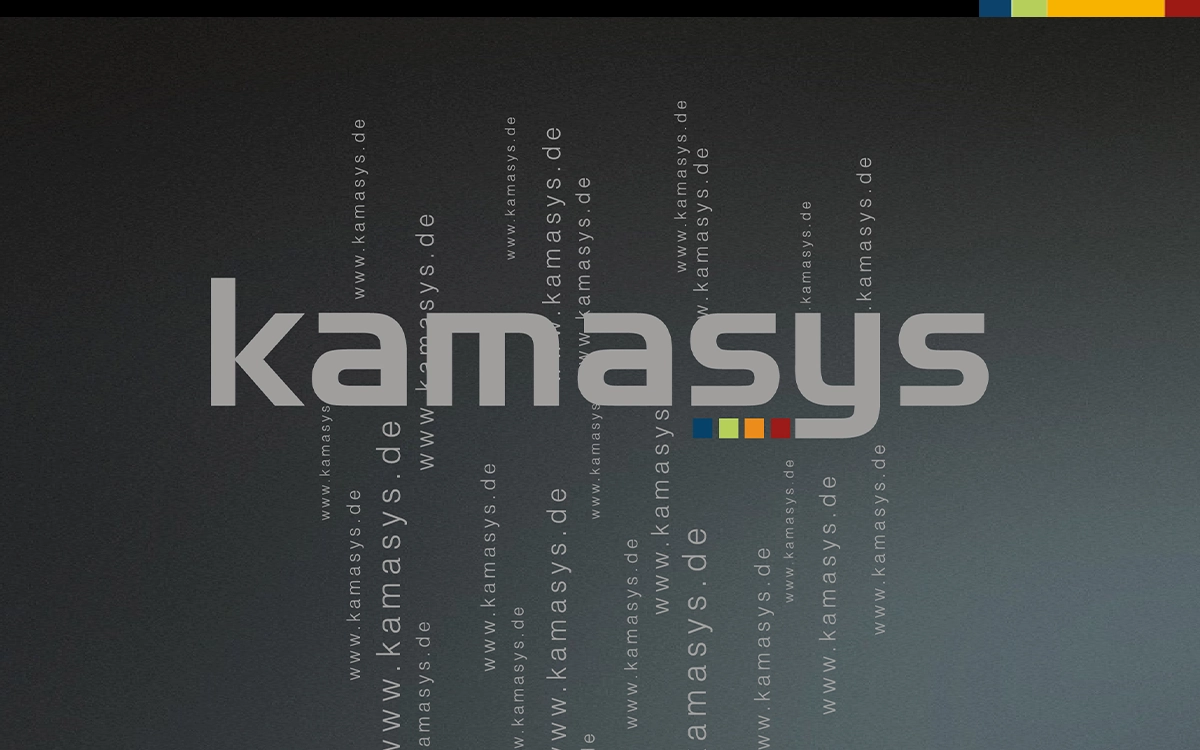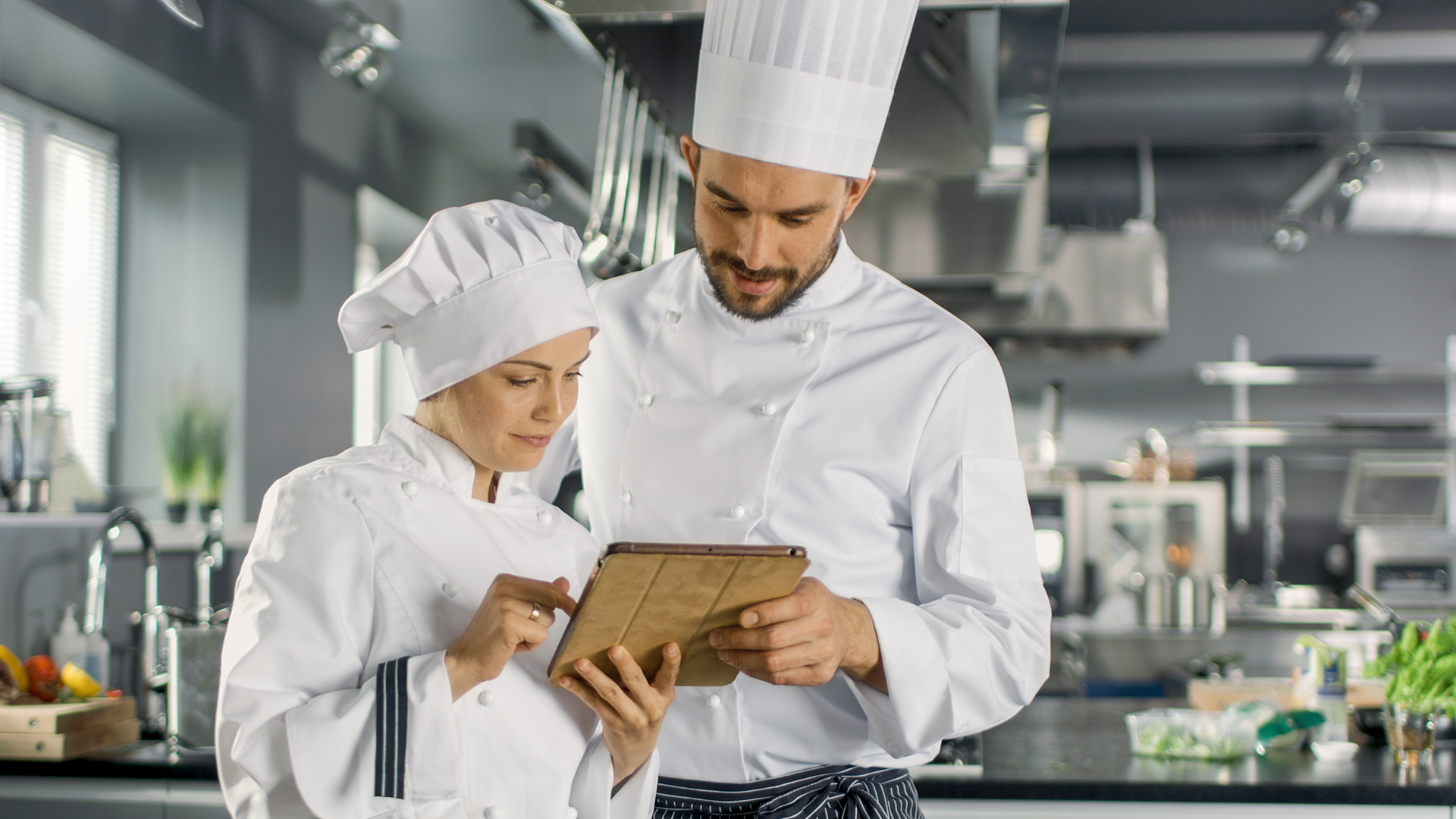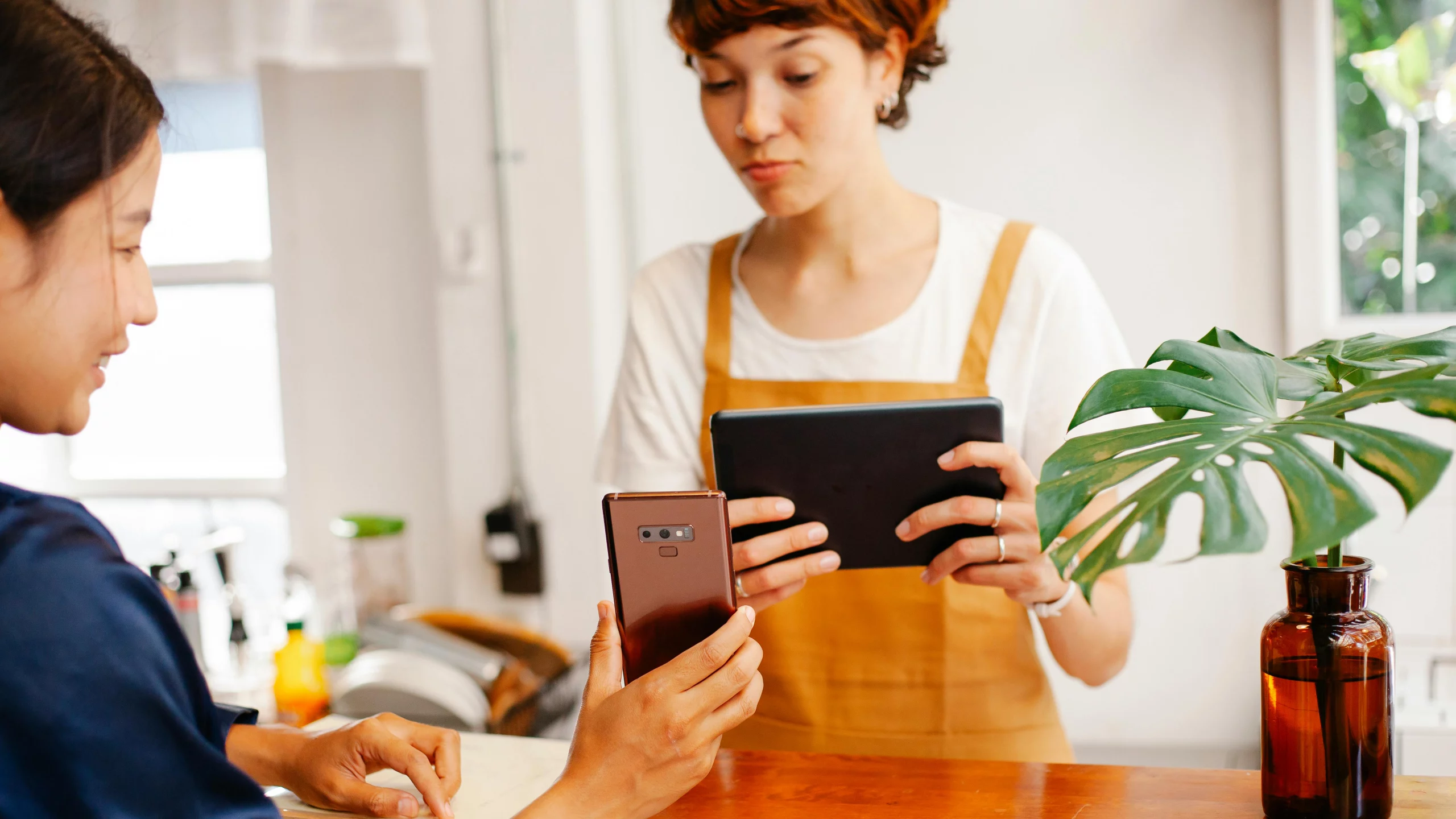More flexible working hours, hybrid offices, home offices: the world of work has been beating to a completely new beat since Corona. For the catering industry, this means now becoming even more flexible and customer-oriented. For months, communal catering, canteens and company restaurants were closed, and new working time models make it all the more difficult to win back guests. Digitization is the key!
Ordering, paying and picking up at the touch of a finger in the company restaurant - what was unimaginable before the pandemic is becoming the new standard. However, many restaurateurs still treat the area of digitization stepmotherly and the necessary rethinking is taking place only slowly. But: The Corona pandemic has turned out to be a driver not only from a technical point of view. Guests' expectations of quality and customer experience have also changed.
Digitization as an opportunity for new gastronomic concepts
Mit der Einführung von App- und Webanwendungen können Caterer und Betreiber von Gemeinschaftsverpflegungen ihren Kunden zahlreiche Mehrwerte bieten. Klassiker und Must-have zugleich ist der digitalisierte Speiseplan: Dank Smartphone immer griffbereit in der Hosentasche. Eine Speiseplan-App bietet dabei den Ausgangspunkt für zahlreiche Kundenbenefits, z. B. mobile Bezahlvarianten, Ordermöglichkeiten oder auch Optionen, um Auslastungen zu erkennen: Komponenten, die die Gäste heutzutage zunehmend erwarten und voraussetzen.

Creating sustainable customer experiences and optimizing costs
In addition to the direct benefits offered to guests, restaurateurs themselves also benefit to a great extent from digitization in mass catering. Not only running costs, but also many processes such as quality management or staff deployment can be optimized. Menu plan changes, cross-site marketing measures, customer surveys for quality surveys, publication of current news, customer frequency meters to direct visitor flows and deploy staff more efficiently - important tools for creating better customer experiences and increasing the quality of company restaurants.
Bundled together, this information converges in a backend system: Here, all details can be evaluated and, if necessary, adjusted and changed. Thanks to the Internet connection, the system is completely location-independent.
"Digitization does not mean throwing existing systems out the window. On the contrary, it should complement them in a meaningful way and optimize them step by step."
Mobile payment and self-checkout increase staff efficiency
Mobile ordering and payment methods are increasingly expected by customers: Cashless payment is now standard. However, guests must be involved in the processes for new payment variants: This is the only way to build trust in new technologies and reduce prejudices. What sounds laborious, however, quickly turns out to be a win-win situation for caterers and guests: faster and simplified checkout processes not only relieve the cashier's staff, but also reduce the number of checkouts. Guests benefit from this in the form of shorter waiting times - in concrete terms, this means more breaks.
A plate scanner, for example, recognizes the food within a few seconds and initiates the payment process. Time savings: up to 90 %!
This gives staff more time for the core tasks of day-to-day business: satisfying customers with delicious and appealing food.
Conclusion: Digitization is an investment in the future to remain marketable
Even if digitization in the mass catering sector is only slowly gaining momentum, a rethink is noticeable. Corona has shown that new digital concepts must be developed and implemented in order to survive in the market. Even if the costs involved seem daunting at first, in the long term the investment is profitable and unavoidable. Moreover, digitization should not, as is often feared, drive staff reductions, but instead create scope for better customer experiences. And that still only works from person to person.


